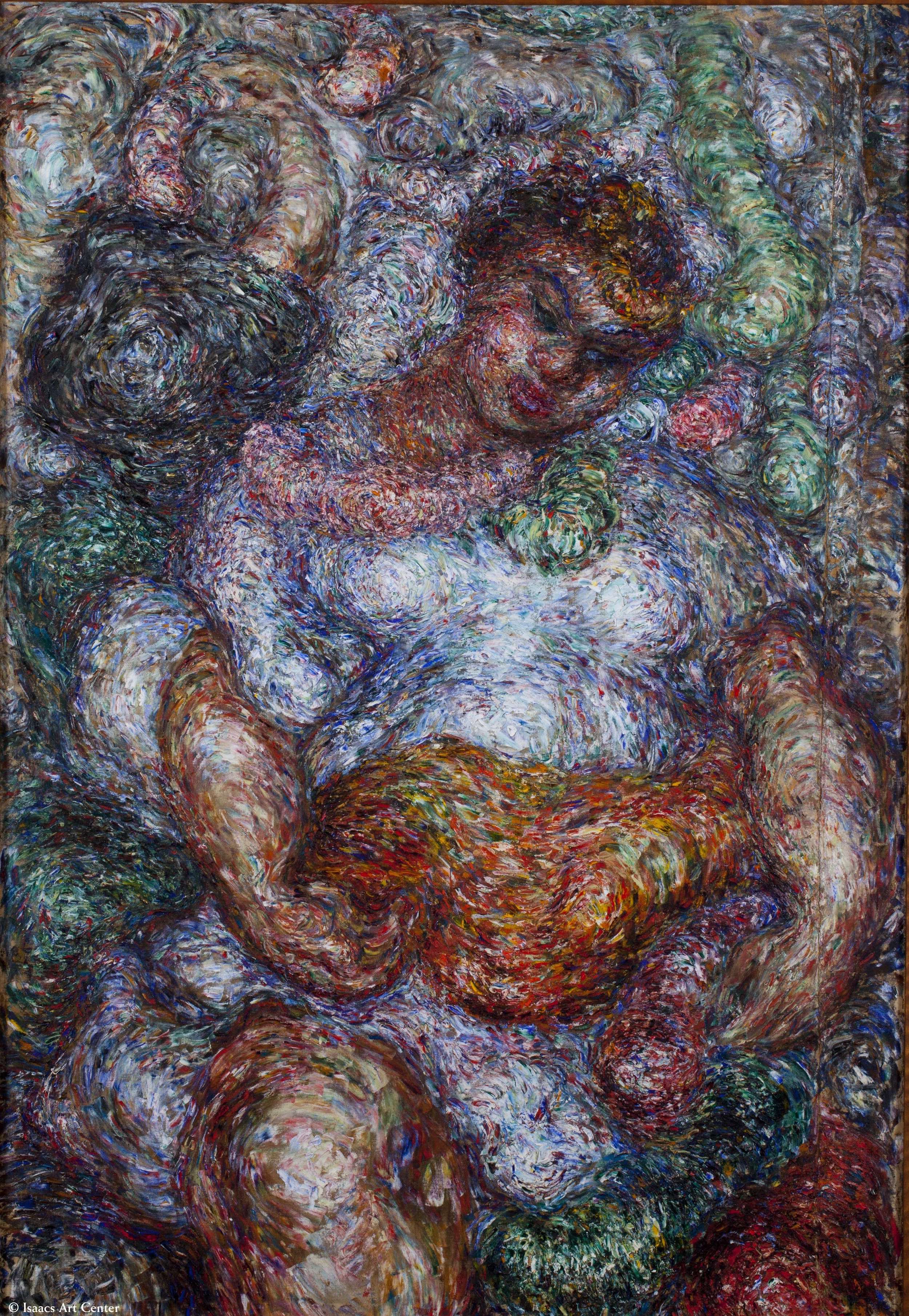Madge Tennent weds the serene and the mesmeric in this depiction of a Hawaiian woman on the brink of marital bliss, her head crowned with a lei po‘o and her torso draped with ceremonial carnations. Rendered at the height of Tennent’s career, Hawaiian Bride signals a stylistic diversification from the brilliant hues and pronounced contours of Local Color (1934) to more subdued and ethereal compositions. “Using a heavy impasto in an ingenious way,” remarked London Apollo Magazine, “Tennent gives her canvases a shimmering quality, from which the figures slowly detach themselves, as one might discern shapes in an environment of iridescent mist.” Behind a diaphanous, atmospheric veil, complementary oils fuse into one of Tennent’s dynamic matriarchs, blending the cobalt outline of the figure with the whirling wisps of her surroundings.
In 1935, Hawaiian Bride traveled with five other major paintings to one-woman shows mounted in Paris, London, Cairo, and New York. The next year, she selected Hawaiian Bride and Old Hawaiian Riding to appear in a series of California exhibitions. While both works were warmly received in Los Angeles and San Francisco, they were refused at the Oakland Annual. An incensed Diego Rivera wrote Tennent personally to vent his anger at the receiving committee’s “stupidity,” adding: “Had I been on the jury refusing your pictures, I would have RENOUNCED at once!”
The Oakland snub notwithstanding, Hawaiian Bride was widely beloved; indeed, the notoriously self-effacing Tennent admitted that it was “one of few paintings with which I am almost satisfied.” A smitten modern art enthusiast purchased the canvas from Tennent’s second London exhibition, and for many years thereafter it hung alongside works by Picasso, Matisse, and Bonnard in his gallery. When Madge and her husband established the Tennent Art Foundation in 1954, the English collector grudgingly sold Hawaiian Bride back to her. For 51 years, the foundation’s collection — the largest of Tennent’s work in the world — was publicly displayed in the artist’s own Honolulu home; it now resides at the Isaacs Art Center on the Big Island of Hawaii, where a major retrospective of Tennent’s life and legacy will be on view through 12 November.


 Madge Tennent
Madge Tennent